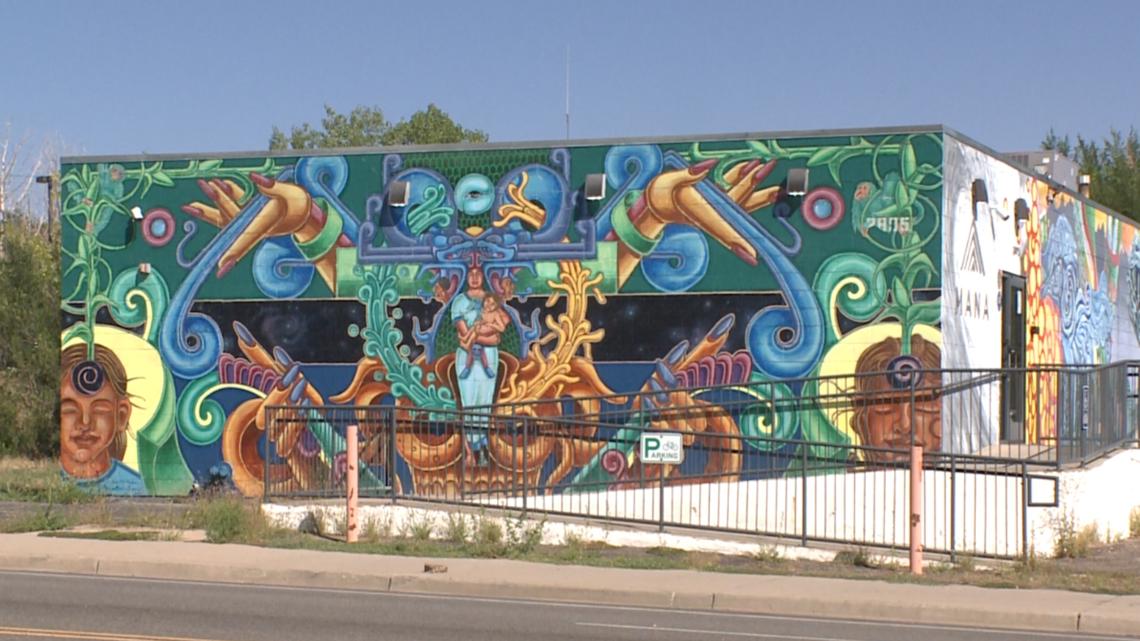Behind the role of corn in Hispanic food and art of the present is a cultural history that dates back thousands of years.
COLORADO, USA — Central to many Latin cultures is corn, a grain with a historical significance that goes back thousands of years. To create food and art celebrating corn in the present is to pay homage to the past.
Current traditions that revolve around corn are rooted in customs that were born long ago thanks to groups in Mesoamerica, the historic area that is made up of several modern-day countries, including parts of Mexico. These practices and beliefs were maintained for thousands of years, carrying the value of corn to the present across cultures, generations and regions.
In Colorado, as soon as the first rays of sunlight begin to illuminate the cornfields, so does the ancient ritual of transforming those grains into tortillas at Las Dos Américas, a local tortillería.
“During the week, well, we always start at five or six in the morning here with the tortillas,” said Carlos Santana Soto.
He was raised in Las Dos Américas wanting to follow in the footsteps of his mother, Liliana Soto, who followed her father’s footsteps: the business was born after her parents migrated to Colorado from Durango, Mexico.
“The first tortillería started in Longmont. We started there 32 years ago,” Soto said. “It was always a dream of my father’s to start a business — he started that tortillería, and we continued with the tortillería in Commerce City, and we have 24 years here.”
Tortillería Las Dos Américas
She explained that her family wanted their business to be traditional, honoring their hometown back in Mexico. Thanks to age-old customs, honoring their town also meant celebrating corn along the way.
“If you look at the Mexican culture, corn is there since the beginning,” Santana Soto said. “And we’re here to continue that legacy, to carry on that Mexican tradition.”
It’s a tradition that started thousands of years ago in the Gulf Coast of Mexico with the Olmecs, according to Victoria Lyall, a pre-Hispanic art curator at the Denver Art Museum.
“They were the first culture, almost 10,000 years ago, who cultivated, who were able to create a cycle of sustainable agriculture,” Lyall said.
The discovery of corn was the root of essential pillars for this civilization.
“If you know where food comes from, you have a lot more free time,” Lyall said. “The next thing you know, we see urban plans, pyramids, we see an explosion of art, that is, of sculptures, installations, bas-reliefs. That made that culture, which was in many ways the mother culture of all Mesoamerica, value corn to the extreme.”
Lyall said that corn started to be perceived as something sacred, central to theories about the origin and evolution of the universe for many Mesoamerican peoples — a veneration that was passed on through the years.
Depictions of corn in ancient art
“For example, the Mayans were called the people of corn,” she said. “And they believe that there are several creations, but the last creation, humans, were made from corn dough.”
Corn also became a symbol of status and importance across cultures.
“We start to see, in the Olmec culture, that those who we presume are the leaders of the community have on their face, on their forehead, there’s a V-shaped space. From that space emerges a shape that symbolizes corn,” Lyall said. “Throughout time, centuries, almost a millennium that separates the Olmecs and the Mayans, we see that the Mayan Ajaws, the rulers, also have a jewel, a piece they wear on their forehead that is an abstract version of that corn plant.”
Just as this symbolism was spread between prehistoric communities, iterations of it can still be found in the present. “Huitzilopocthli,” a Denver mural painted by David Garcia in 2008, is an example of this: Garcia’s brush strokes illustrate corn plants sprouting from two heads.


“They’re seeing, the muralists, the iconography of their ancestors, and they want to show the importance of corn still,” said Lucha Martínez de Luna, director of the Chicano Murals of Colorado Project and associate curator of Hispano, Chicano and Latino history and culture at History Colorado.
Corn was introduced to what is now the Southwest United States around 2000 B.C. due to the exchange of products and ideas with Mesoamerican groups, according to Martínez de Luna. Gradually, this grain began to influence the traditions of the people in this region and eventually became a crucial part of Native cultures.
“Here, in the Southwest, we have some similarities in matters of origins and also the importance of corn in creation narratives,” Martínez de Luna said. “In this area, those who were producing a lot of corn are called the Hohokam and the Pueblo, the Puebloans. So they, in their iconography, and also by the way in their murals, they paint the importance and there are depictions of corn.”
Mesa Verde National Park, where Ancestral Puebloans built communities
This artistic ode to corn is also found in contemporary murals, some of which remain in Colorado as a result of community activism during the Civil Rights Movement. Martínez de Luna said that many Latinos did not receive education about their history in schools during this time.
“The youth wanted to have access to their history because they knew they spoke Spanish here, they knew they had their roots with the Indigenous people here, but they didn’t have access to this history,” she said. “So, during the movement, muralists begin to paint their history in the community.”
Murals became the textbooks they lacked, and corn was present from the very first page.
“It really plays a very important role, the role of corn in these murals, as we can see here,” Martínez de Luna said, referencing “La Alma,” a mural in the Lincoln Park neighborhood painted by her father, Emanuel Martínez. “And a lot of times, they depict corn as a goddess, but it’s also a reference to how important corn continues to be, not only for Indigenous people, but also for the mestizos, and it continues to be very important in our culture.”
Contemporary murals that showcase corn in Colorado
For many Latinos, to praise corn — be it through art or food — allows for a connection to the past. Back at Las Dos Américas, Soto said that what’s on a plate allows her customers to get in touch with their roots.
“I have many customers who, actually, they come in and say, ‘You know what? Coming here is like living things again,'” she said. “For many, unfortunately, they can’t go back to their countries yet. And coming here and sitting down to eat a tortilla, a gordita, is remembering those times.”
To Soto’s son, continuing to celebrate corn is part of the tortillería’s mission.
“We want to continue with this Mexican tradition, not only with Mexicans, but with all Hispanics,” Santana Soto said.








More Stories
Americans get biggest road win and capture the Presidents Cup for the 10th straight time
Francis Ford Coppola’s first film in 13 years flops at box office
Ross Chastain passes Truex on late restart to win NASCAR Cup Series race at Kansas Speedway